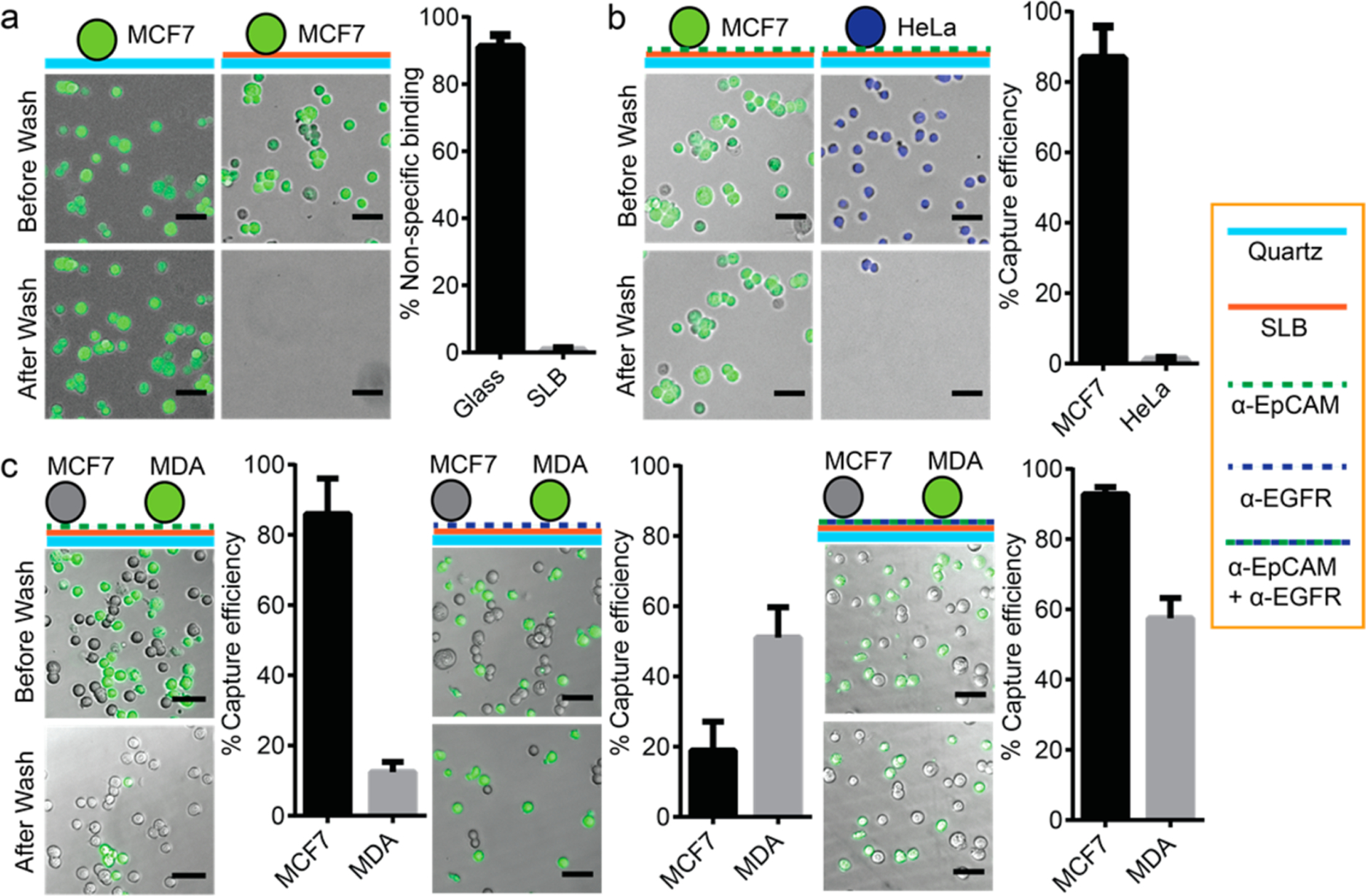Figure 2.

Nonspecific cell adhesion and antigen-specific cell capture on an antibody-functionzlied supported lipid bilayer. (a) A supported lipid bilayer significantly reduces the nonspecific cell adhesion of MC7 cells stained with Celcein-AM (green). 91.1 ± 3.5% of MCF7 cells were captured on a bare glass surface. However, only 0.7 ± 0.6% of MCF7 cells were captured by supported lipid bilayers. (b) Anti-EpCAM-functionalized supported lipid bilayers specifically captured EpCAM-expressed cells. 86.8 ± 8.9% of MCF7 cells (EpCAM-positive) stained with Celcein-AM (green) were captured by anti-EpCAM-functionalized supported lipid bilayers. However, only 1.1 ± 0.5% of HeLa cells (EpCAM-negative) stained with Hoechst33342 (blue) were captured. (c) Heterogeneous cell capture was demonstrated using a multiantibody-functionalized supported lipid bilayer. An anti-EpCAM-functionalized supported lipid bilayer captured 86.0 ± 10.1% of MCF7 cells (high-level EpCAM expression) but only 12.4 ± 3.0% of MDA-MB-231 cells (low-level EpCAM expression) stained with Celcein-AM (green). Meanwhile, an anti-EGFR-functionalized supported lipid bilayer captured 51.1 ± 8.7% of MDA-MB-231 cells (high-level EGFR expression) but only 18.9 ± 8.2% of MCF7 cells (low-level EGFR expression). With a supported lipid bilayer functionalized with both anti-EpCAM and anti-EGFR, both MCF7 and MDA-MB-231 cells could be captured simultaneously with capture efficiencies of 92.8 ± 2.0 and 57.5 ± 5.8%, respectively (All scale bars are 50 μm.) Every experiment was repeated five times (n = 5), and error bars represent the standard deviation (SD).
